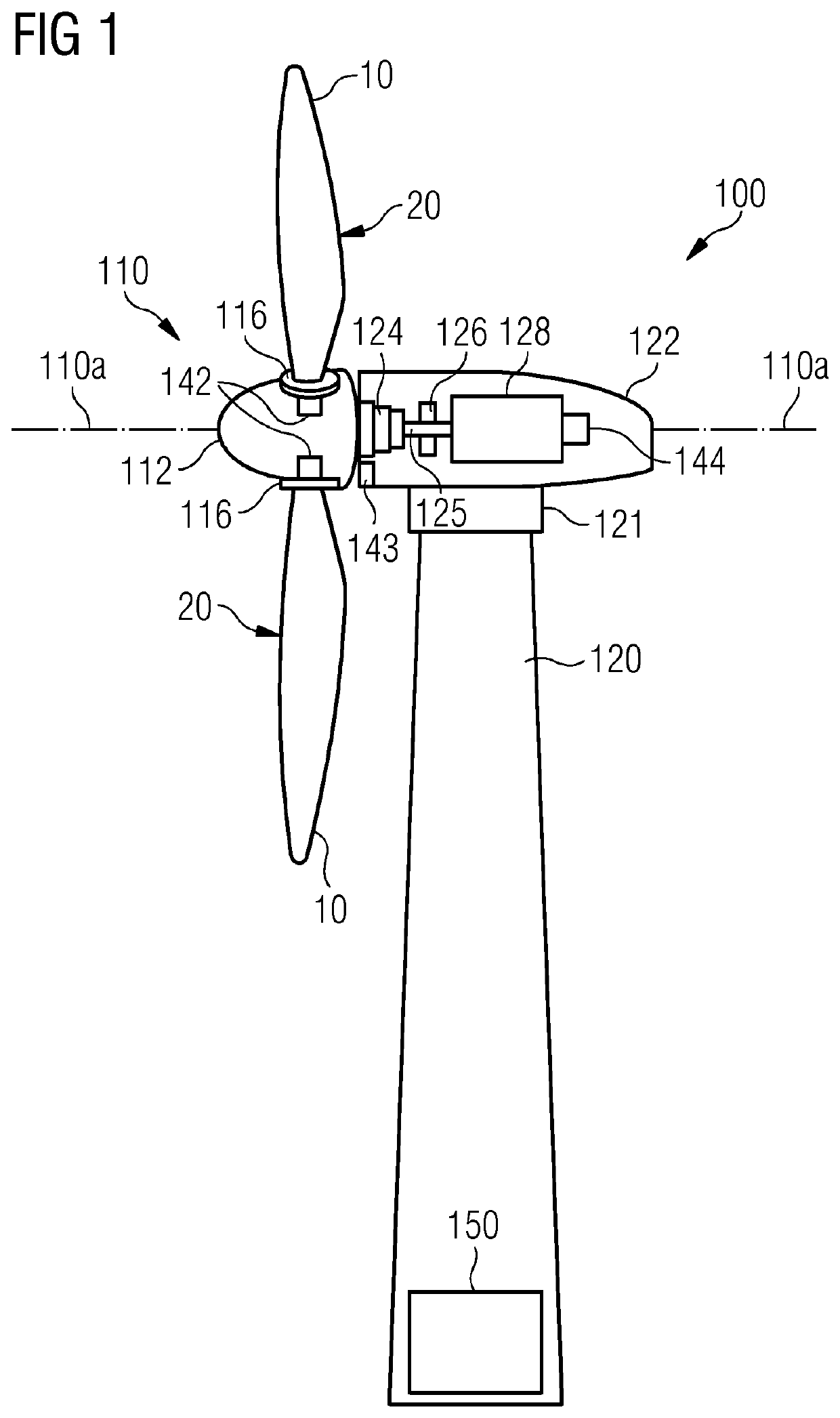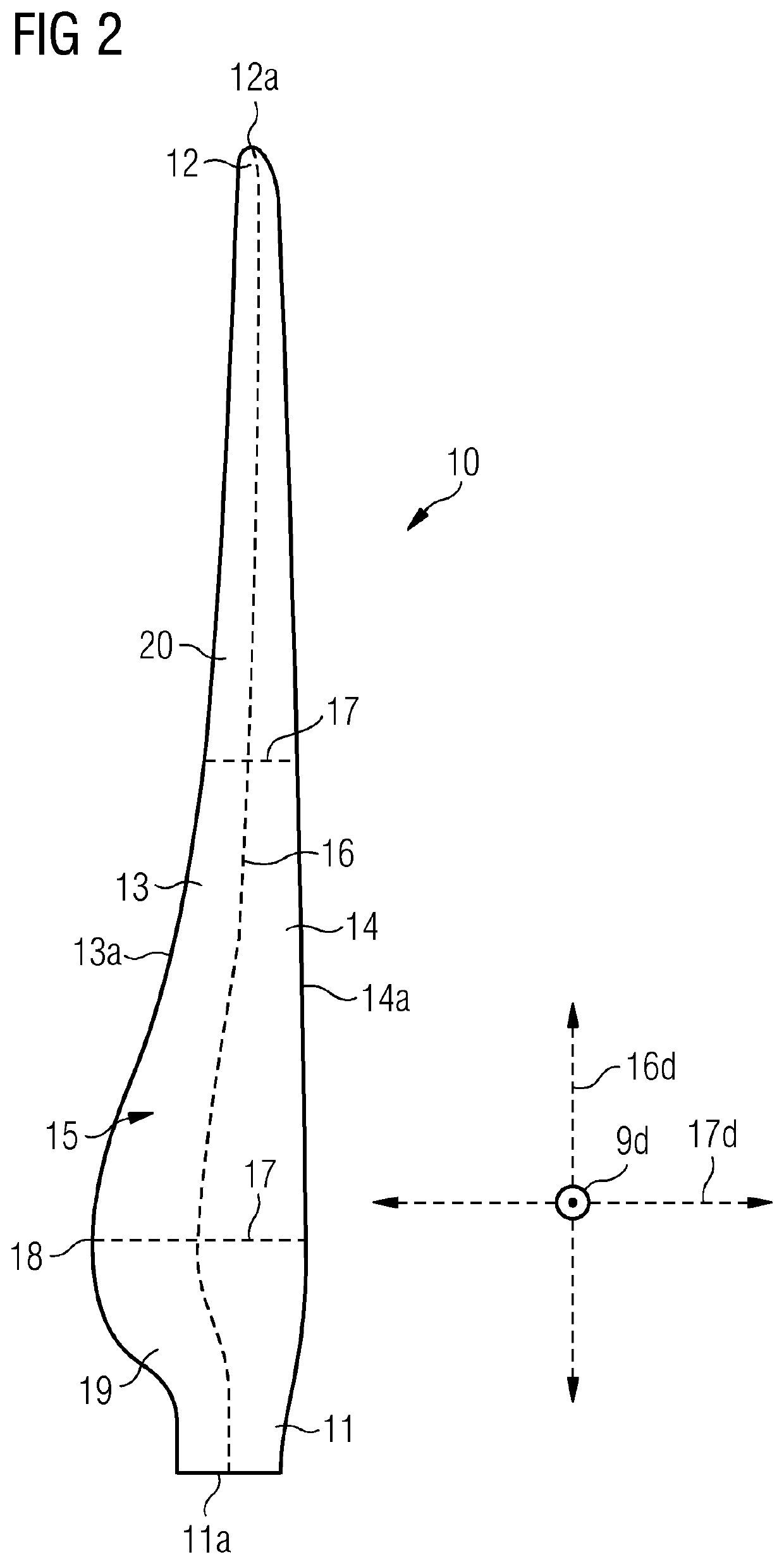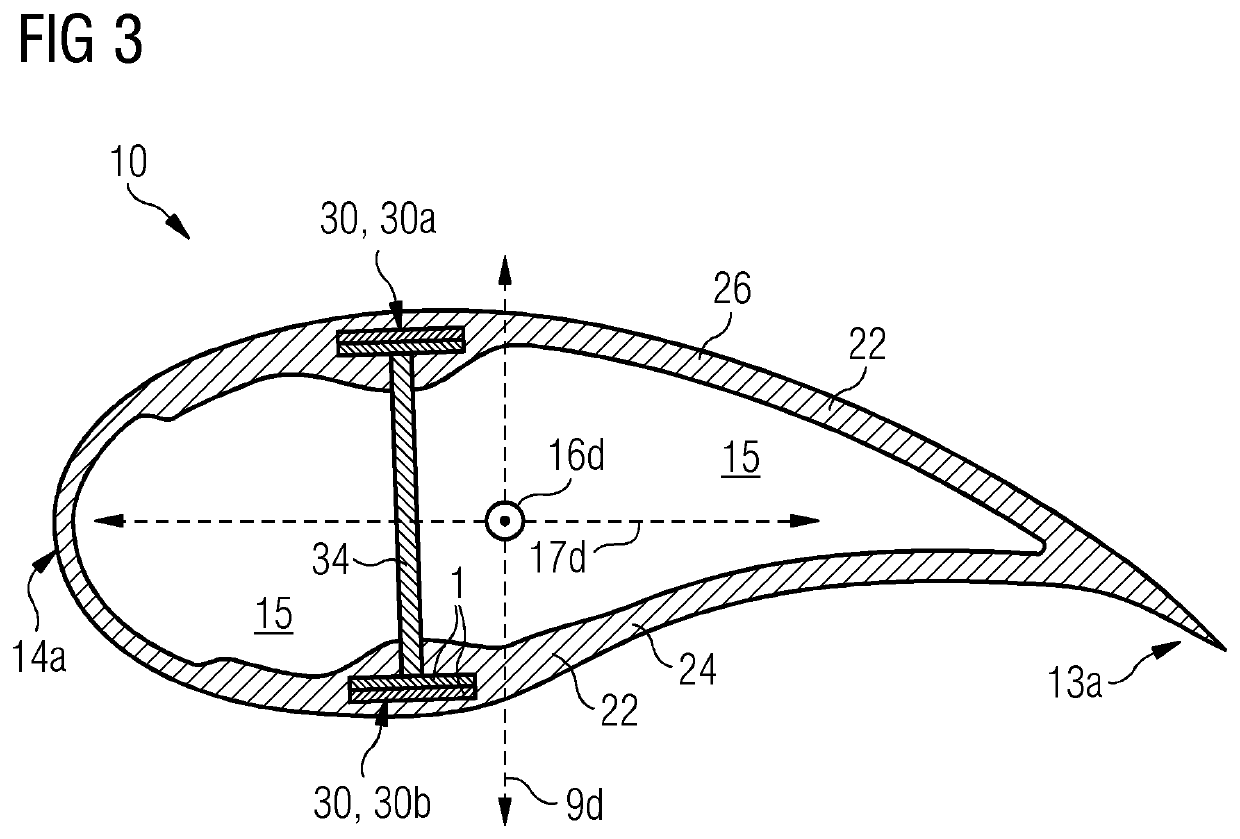Pultruded fibrous composite strip with width and thickness tapered ends for wind turbine spar caps
a composite strip and wind turbine technology, applied in the field of wind turbine spar caps, can solve the problems of large tapering regions, less durable consumables used in the machining process, and inability to meet the requirements of machining,
- Summary
- Abstract
- Description
- Claims
- Application Information
AI Technical Summary
Benefits of technology
Problems solved by technology
Method used
Image
Examples
Embodiment Construction
[0029]Hereinafter, above-mentioned and other features of the present technique are described in detail. Various embodiments are described with reference to the figures, wherein like reference numerals are used to refer to like elements throughout. In the following description, for the purpose of explanation, numerous specific details are set forth in order to provide a thorough understanding of one or more embodiments. It may be noted that the illustrated embodiments are intended to explain, and not to limit embodiments of the invention. It may be evident that such embodiments may be practiced without these specific details.
[0030]It may be noted that in the present disclosure, the terms “first”, “second”, “third” etc. are used herein only to facilitate discussion and carry no particular temporal or chronological significance unless otherwise indicated.
[0031]FIG. 1 shows an exemplary embodiment of a wind turbine 100 of the present technique. The wind turbine 100 includes a tower 120,...
PUM
| Property | Measurement | Unit |
|---|---|---|
| thicknesses | aaaaa | aaaaa |
| thicknesses | aaaaa | aaaaa |
| angle | aaaaa | aaaaa |
Abstract
Description
Claims
Application Information
 Login to View More
Login to View More - R&D
- Intellectual Property
- Life Sciences
- Materials
- Tech Scout
- Unparalleled Data Quality
- Higher Quality Content
- 60% Fewer Hallucinations
Browse by: Latest US Patents, China's latest patents, Technical Efficacy Thesaurus, Application Domain, Technology Topic, Popular Technical Reports.
© 2025 PatSnap. All rights reserved.Legal|Privacy policy|Modern Slavery Act Transparency Statement|Sitemap|About US| Contact US: help@patsnap.com



